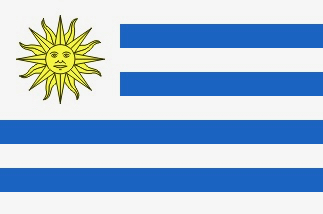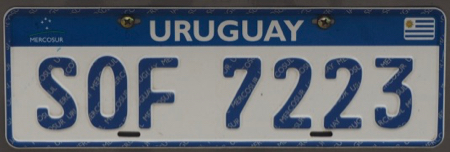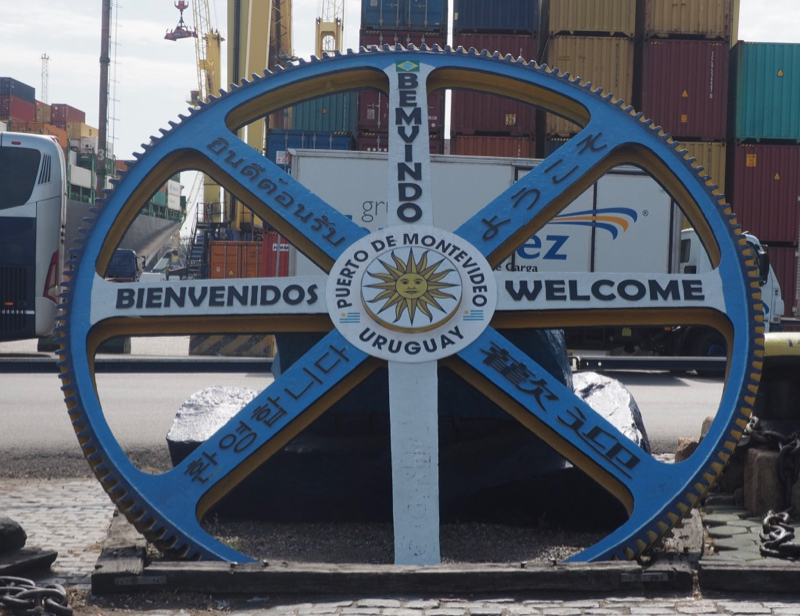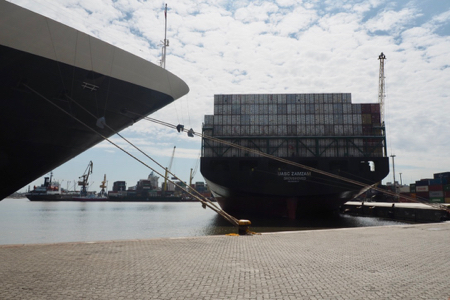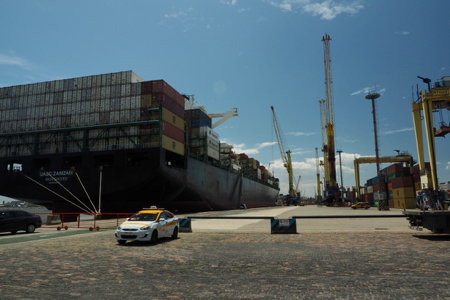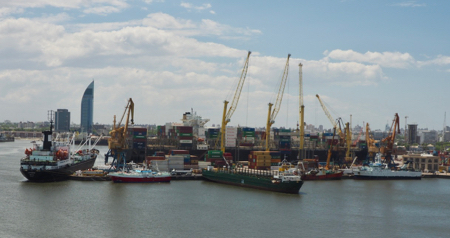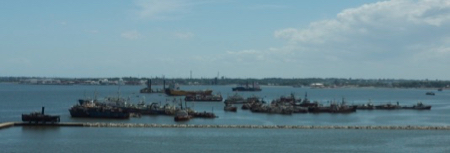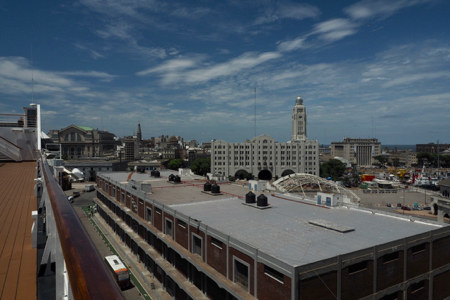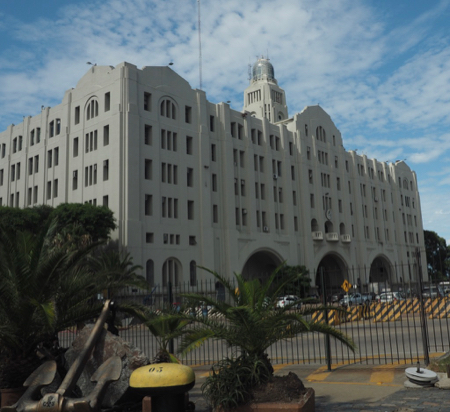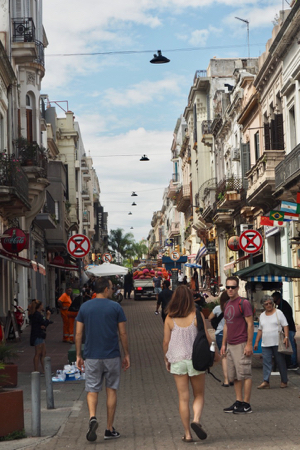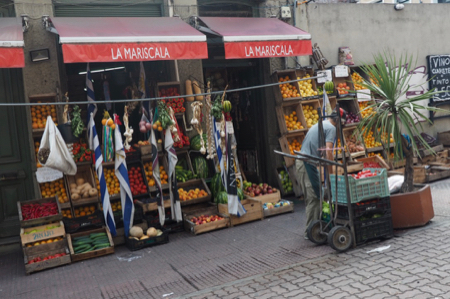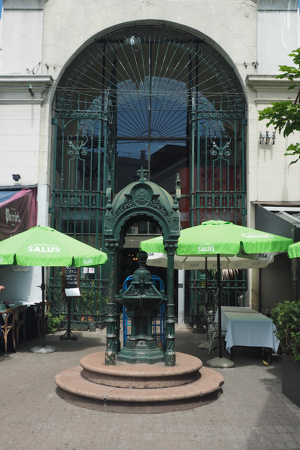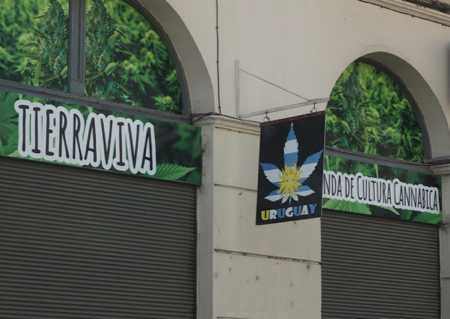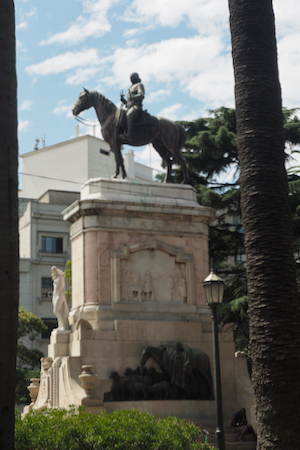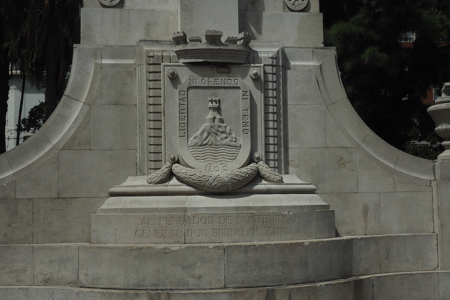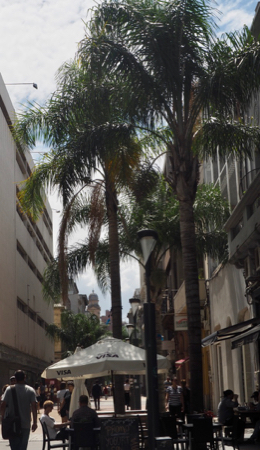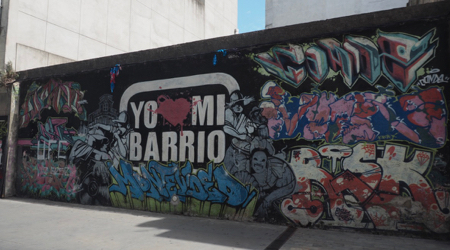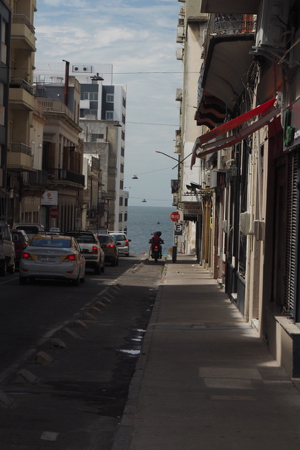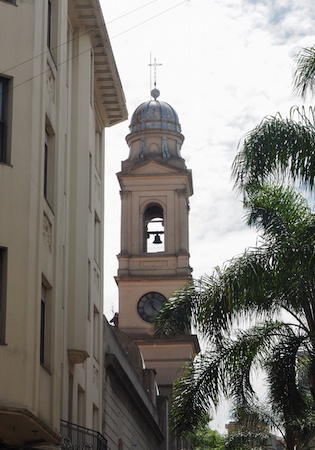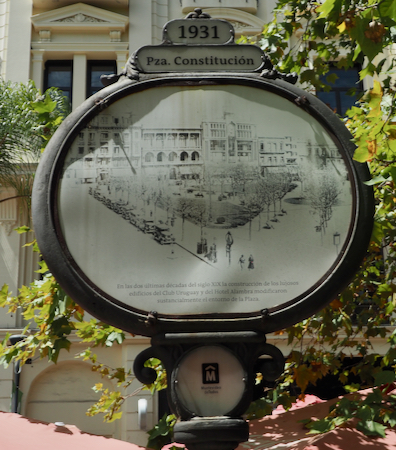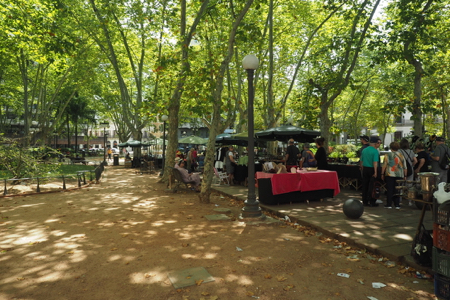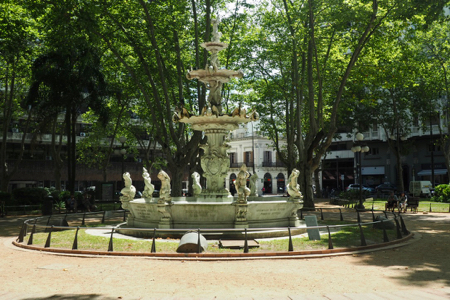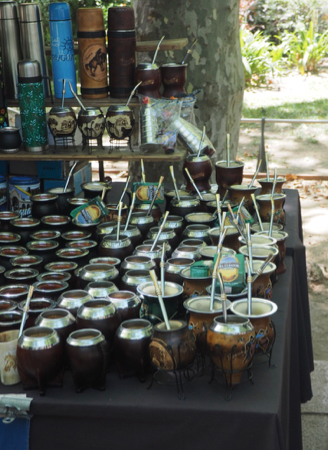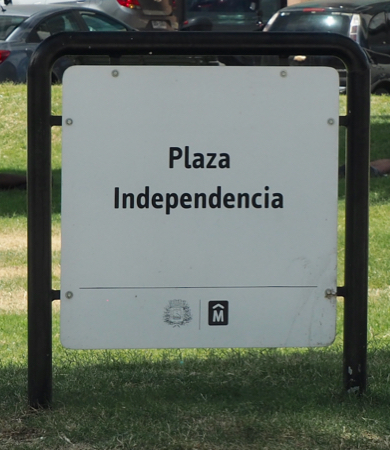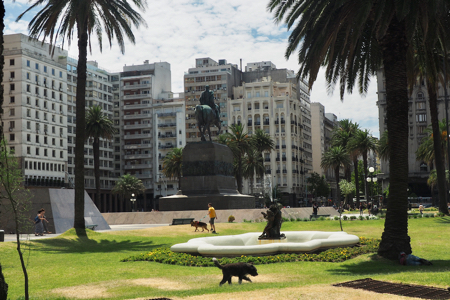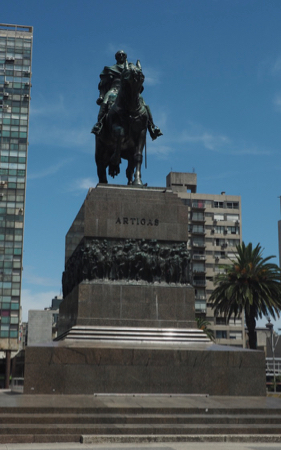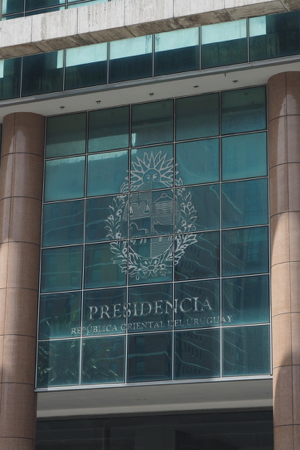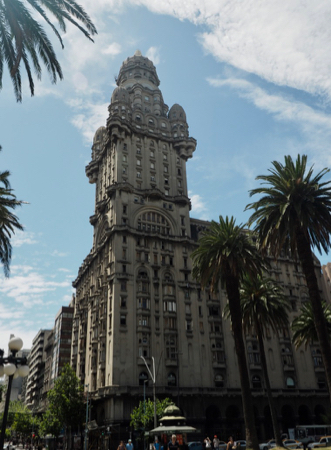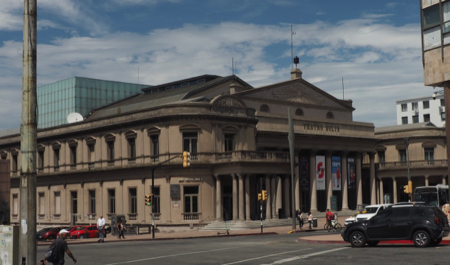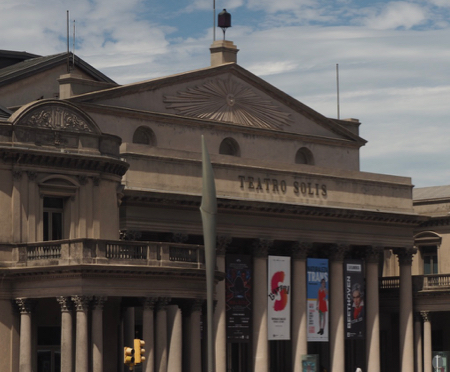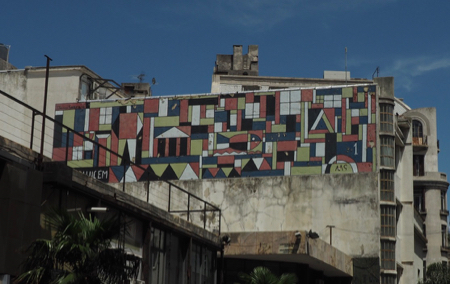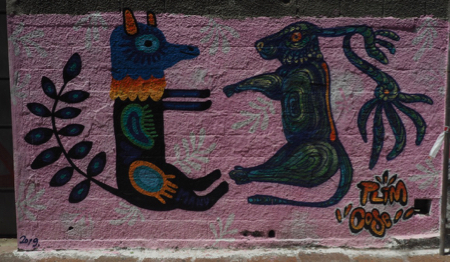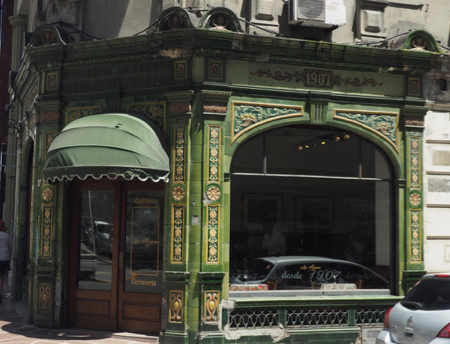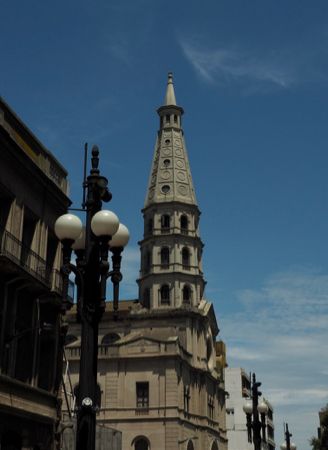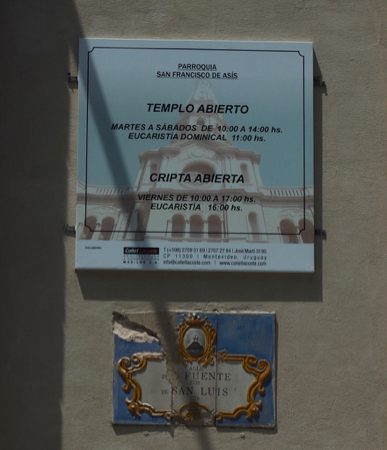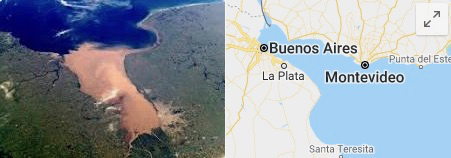Sun., 1/26 - At Sea in the South Atlantic
Another day at sea and another three lectures in the crowded main stage auditorium and on TV in our staterooms. We did attend the Captain’s Reception honoring new 100, 300, and 1,000+ day “mariners.” It meant free champagne. Of interest is always who has been on the HAL cruises for the most days. This time there were 1500 and 1700 day cruisers! Count how many years that would be! Some of these people are using the cruise ships instead of going into Continuing Care facilities. It may actually be cheaper, if you are in pretty good health!
Mon., 1/27 - Puerto Madryn, Argentina - or Not!
At 7:30 our ship headed in toward the long pier sticking out into a huge bay at Puerto Madryn. We could see the very flat coast line and the modern high rises of the “Miami Beach-like” city founded by Welsh settlers. But with winds of 40 MPH, and due to rise higher, we did not get closer than 500 yards to the pier. Out on the promenade deck to look at the city, the wind nearly blew us over! Therefore, another sea day. Boo! Everyone was looking forward to some time on solid ground.
Puerto Madryn
Puerto Madryn
Tues., 1/28 - At Sea, again
This was a total nothing day at sea. Kevin made a presentation on the port stop in Buenos Aires. We have been there on tours twice before and had time to explore on our own, as well. Today was our turn for a Mariners’ luncheon. A Mariner has accumulated at least 100 sea days on HAL and there are 1,000 Mariners on this voyage (out of 1400 passengers) so this is at least the third special luncheon. Today the sea and winds (40+MPH) were causing more rolling and we didn’t feel well enough to go walking around the ship. Evidently some people got wet from wave action out on the promenade deck above our cabin.
Wed., 1/29 - Montevideo, Uruguay
The Zaandam docked at Montevideo, Uruguay at 7 AM. The dock is right at the old town so it was convenient to take the self-guided walking tour. On shore, we got a map and then downloaded about 10 days worth of emails - Wi-Fi has been mostly non-existent on this trip.
A new country! So the first item of business was to get a souvenir spoon. That was easy. Then we spent a couple hours walking about the center city area: three plazas, the pedestrian shopping streets, the Metropolitan Cathedral. The Cathedral interior was mostly white marble, but otherwise was ornate, but not overwhelming. The two things to see in Montevideo are the street art and the old ornate architecture. The old town felt very much like many small European cities. Many exposed exterior walls were painted by local artists.
Flag of Uruguay
License Plate
Nice welcome sign
This cargo ship was "shoe-horned" into its berth after we were already docked.
Working port
Looking toward the city
These are derelict ships put there for who knows what purpose
Looking toward shore in the port area
Terminal building at the port
Street scene
A market
Fancy restaurant entrance
A CBD store
Crumbling architecture
Statue of General Don Bruno De Zabala, the founder of Uruguay
Pedestrian street
Graffiti
Looking out to the Rio de la Plata
Bell tower of the Metropolitan Cathedral
Scene in the Constitution Plaza
Central Fountain in the Constitution Plaza
Independence Plaza
Statue of Jose Artigas, a national hero
Office of the President
Palacio Salvo
Teatro Solis -Uruguay's most important and renowned theater
Wall mural
More graffiti
Restaurant entrance and facade
Church of San Francisco de Asis
We watched some of the sail-away from the promenade deck. Two tugs helped get us out of the small space among container ships.
Our ship had to go back east (downstream) out of the Montevideo Channel and then turn and join the shipping lane up the Rio de la Plata to Buenos Aires.
Satellite photo showing the very muddy Rio de la Plata between Buenos Aires (bottom) and Montevideo (top left). The river, some consider it a large bay, is fed at its western end by the Parana and Uruguay Rivers.
"The Río de la Plata's drainage basin (sometimes called the Platine basin or Platine region) is the 3,170,000-square-kilometre (1,220,000 sq mi) hydrographical area that drains to the Río de la Plata. It includes areas of southeastern Bolivia, southern and central Brazil, the entire country of Paraguay, most of Uruguay, and northern Argentina. Making up about one fourth of the continent's surface, it is the second largest drainage basin in South America (after the Amazon basin) and one of the largest in the world." (From Wikipedia)
No wonder it is muddy!
| Return to Top | Return to Itinerary | Return to Trips page to view other trips | Return to Dreamcatcher Home Page |
.jpg)
.jpg)
